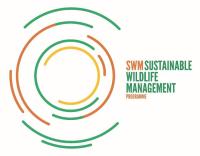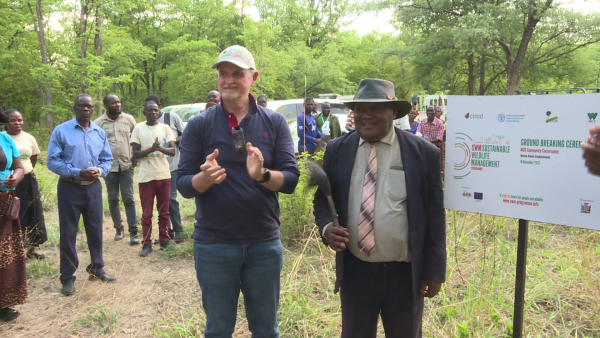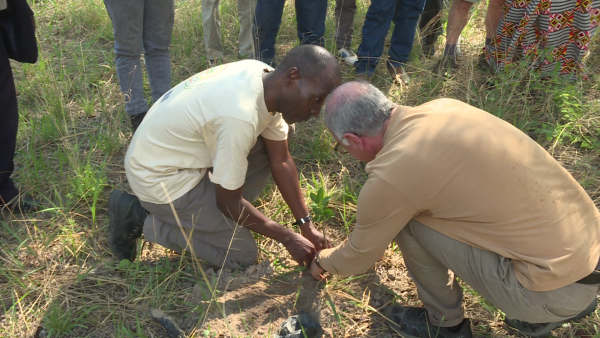- Home
- Worldwide
- Our regional offices
- Southern Africa and Madagascar
- News : Southern Africa and Madagascar
- Nyawa community celebrates the birth of MIZE community conservancy
In Zambia | Nyawa community celebrates the birth of MIZE community conservancy.

Nyawa community of Zambia © Cirad, Martha Katsi
Nyawa community’s dreams to sustainably manage wildlife are coming to fruition after their registration in October with the Patents and Companies Registration Agency was followed by the grand launch of MiCC a month later. The community hopes to benefit from such subtle conservation efforts economically.
MiCC will be run by a board, with local representation, and operates as a company limited by guarantee in accordance with Zambian law (the Companies Act No.10 of 2017).
Presiding over the official launch of the conservancy, His Royal Highness, Chief Nyawa, was joined by members of Nyawa Community, the Kazungula District Commissioner, Elias Siamibila, the Sustainable Wildlife Management (SWM) Programme team, and other project partners.
"Today's celebration embodies teamwork in its purest form.
Without the leadership and assistance of our donors and so many people present, we would not be here today to commemorate this significant project. As a community, we saw that farming was becoming less viable due to climate risks and change; therefore we made a decision to pursue natural resource conservation. This conservancy will contribute to improving community livelihood, wildlife management, and land use planning.
In the Kavango Zambezi (KaZa) Transfrontier Conservation Area, the EU-funded SWM (Sustainable Wildlife Management) Programme collaborates with traditional chiefs, local communities and national governments to develop and strengthen community conservancies. The French Agricultural Research Centre for International Development (CIRAD) and the Center for International Forestry Research (CIFOR) are working together to oversee the project in Zambia.
The Sustainable Wildlife Management (SWM)
The Sustainable Wildlife Management (SWM) Programme is a major international initiative that aims to improve wildlife conservation and food security. We are developing innovative, collaborative and scalable new approaches to conserve wild animals and protect ecosystems, whilst at the same time improving the livelihoods of indigenous peoples and rural communities who depend on these resources.
The SWM Programme is an initiative of the Organisation of African, Caribbean and Pacific States (OACPS), funded by the European Union with cofunding from the French Facility for Global Environment (FFEM) and the French Development Agency (AFD). The programme activities are being implemented in fifteen countries by a consortium of partners, which includes the Food, and Agriculture Organization of the United Nations (FAO), the French Agricultural Research Centre for International Development (CIRAD), the Center for International Forestry Research (CIFOR), and the Wildlife Conservation Society (WCS).
His Royal Highness conceived and carried out the vision for this project. The SWM Programme and partners found a way to make that vision a reality
Director General for CIFOR, Robert Nasi, commended Chief Nyawa and his community for investing in natural resources management.
Chief Nyawa and his community are using their own natural resources and green infrastructure – the forest, the wood and the trees – to invest in natural solutions to withstand the effects of climate change.
The SWM Programme's work in the region is primarily focused on reducing human–wildlife conflicts, preserving biodiversity and enhancing people's quality of life.
The SWM Programme is also focused on improving the interconnectivity of wildlife throughout the KaZa landscape, but the most crucial aspect is that the Nyawa community eventually benefits with better livelihoods, incomes, jobs and all other forms of rural development.
I am urging Nyawa residents to prevent the project from failing. May everyone take on the role of this project's guardian and defender, as it is our project. I have heard from two CCs in the Kazungula district so far; the first was the Simalaha CC jointly led by Senior Chief Inyambo Yeta and Chief Sekute. I can tell you that because MiCC is entirely owned by the community, Nyawa's economy will be transformed.
The SWM Programme is in line with the Zambian government's objective to encourage local social and economic development, which satisfied the District Commissioner for Kazungula, Elias Siamibila, who urged the Nyawa community to cooperate for the project's success.
After the launch, a board will be chosen and a management strategy will be developed in order to ensure the MiCC's viability and strengthen its governance. The MiCC will collaborate with possible investors from the private sector to launch nature-based businesses that will bring in money for the community in order to ensure its economic survival. The SWM Programme will continue to support fundamental infrastructure development, private sector partnerships, governance, and resource management.
The work has not always been easy, and the result is well deserved. Today is the official day of the creation of Mize Community Conservancy, and, in the same way that these trees have just been planted, it is a seed that will have to be cared for and nurtured, just like the two other community conservancies, Simalaha in Zambia, and Mucheni in Zimbabwe, which form the core of our SWM Project within KaZa TFCA.



























